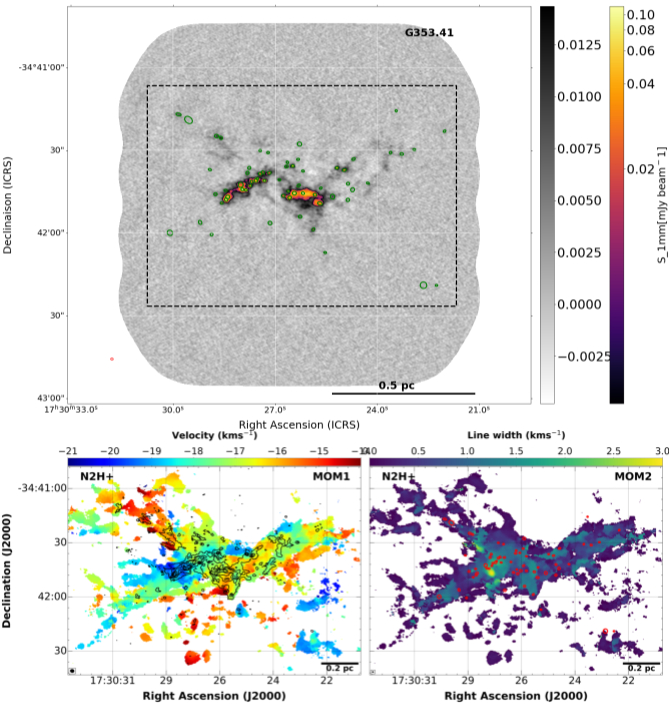| EPoS Contribution |
|
ALMA-IMF: Exploring the gas and core kinematics towards 15 massive protoclusters
Nichol Cunningham IPAG, Grenoble, FR | |
| To understand the mechanism of star formation it is fundamental to investigate the distribution, dynamics, and kinematics of the gas in clumps and clusters. This requires probing a large homogeneous selection of protoclusters which was recently achieved within the ALMA-IMF Large program. I will present the ALMA-IMF Large Program which covers a total non-contiguous area of 53 square parsecs towards 15 massive nearby (2 - 5.5 kpc) protoclusters that span a range of well-defined early evolutionary stages and masses (including W51-IRS2, W43). More than >600 compact cores have been extracted from the 1.3mm dust continuum across the 15 protoclusters and we will present the dynamical properties of these cores using the optically thin DCN emission along with the gas kinematics extracted from the dense gas tracer N2H+. These molecular line data are combined with the results from the dust continuum data to obtain the core dispersion and gas dynamics across different protoclusters in the survey. One of the main objectives of the ALMA-IMF Large Program is to discriminate between the quasi-static and dynamic scenarios by quantifying the role of cloud and core kinematics in defining core mass and in how this changes over time. | |
 | |
| Caption: The top panel displays the ALMA 1.3mm continuum image (~0.8” resolution) towards one of the protoclusters in the sample, G353.41. The green ellipses mark the 62 compact continuum cores extracted using the getsf extraction software. The lower panels highlight the network of filaments, which interact at the center of the G353.41 protocluster. The first-moment (in the lower left) and second-moment (in the lower right) from the 12 m array images of the N2H+(1-0) isolated hyperfine satellite, corresponding to the centroid velocity and line-width. The 1.3 mm continuum emission in black contours and the locations of the getsf cores are highlighted by the red ellipses. The N2H+ filamentary components exhibit significant velocity differences corresponding to a crossing time on the order of 2.5 × 10^5 Myr (1 pc at 4 kms−1); they may therefore play an important role in the building up and continued growth of the dense structures of the G353.41 cloud. | |
| Collaborators: F. Motte, IPAG, FR A. Ginsburg, U Florida, US R. Galvan-Madrid, IRyA UNAM, MX S. Bontemps, U Bordeaux T. Nony , IRyA UNAM, MX ++ALMA-IMF team |
Key publication
Suggested Session: Turbulence & Cloud Dynamics |

